 Approved by Dr. Dwight Alleyne, DVM
Approved by Dr. Dwight Alleyne, DVM How Much Exercise Does A Dog Need?
You probably know that physical activity is important for your dog’s health. But how much exercise do dogs need exactly? Turns out, factors like your dog's age, breed, and general health can all play a role.
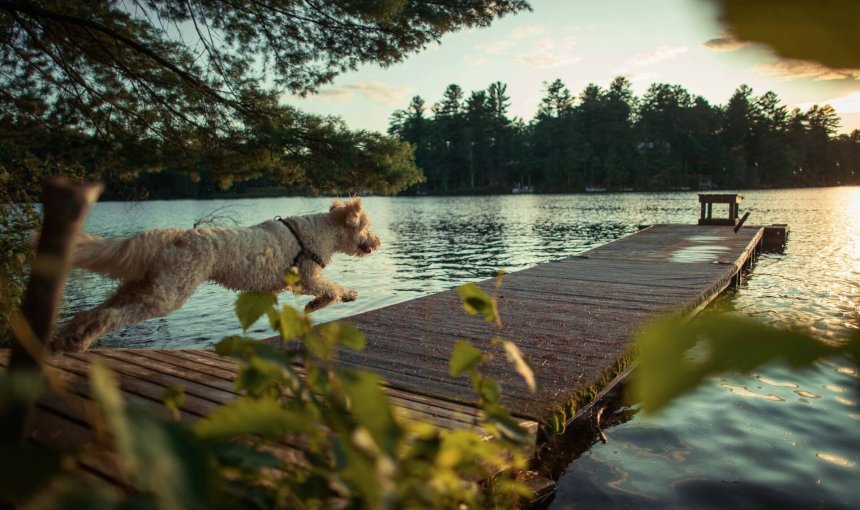
Exercise is a part of most dogs’ DNA. After all, most of them were bred for activities like herding, retrieving, or patrolling. But no matter if you’ve got a more active dog breed or a more chill, low-maintenance one, you might be wondering: how much exercise does a dog need?
Well, as a rule of thumb – no dog was ever bred to lie around all day, waiting for you to come home from work. (Yes, even senior dogs!) Plus, your pup depends on you to get the right amount of exercise so they can be their best, happiest, and healthiest self.
So even if you aren’t used to exercising with your dog yet, here’s a fun way to stay motivated: tracking your dog’s everyday activity. In fact, vets even recommend activity tracking as a way to pick up early on a health issue – and take action before your dog’s health worsens.
So in this post, we’re going to cover how to pick up on your dog’s exercise needs – plus, how to monitor their activity. Let’s go!
- How do you know whether your dog may need more exercise?
- The perks of an everyday exercise routine – for your dog & you
- How much exercise does a dog need every day – based on age?
- How much exercise does a dog need every day – based on breed?
- What are the best ways to exercise your dog?
- Other factors that affect how much exercise your dog needs
- Wrapping up: how much exercise does a dog need?
How do you know whether your dog may need more exercise?
So let’s get into it: how much exercise does a dog need everyday to stay fit and healthy? Or more like…how can you tell whether your dog needs more exercise or less?
Well, let’s start with looking at your dog’s behavior. Does your buddy frequently:
- Try and get you to play with them?
- Get into the trash?
- Pull on the leash?
- Chew your slippers, carpets, couches, or furniture?
- Bark excessively?
- Roam the house at night?
- …or try and escape from home – or while you’re out on a walk or hike together?
These are some ways your dog’s extra energy tends to manifest. More often than not, it means they probably need more exercise!
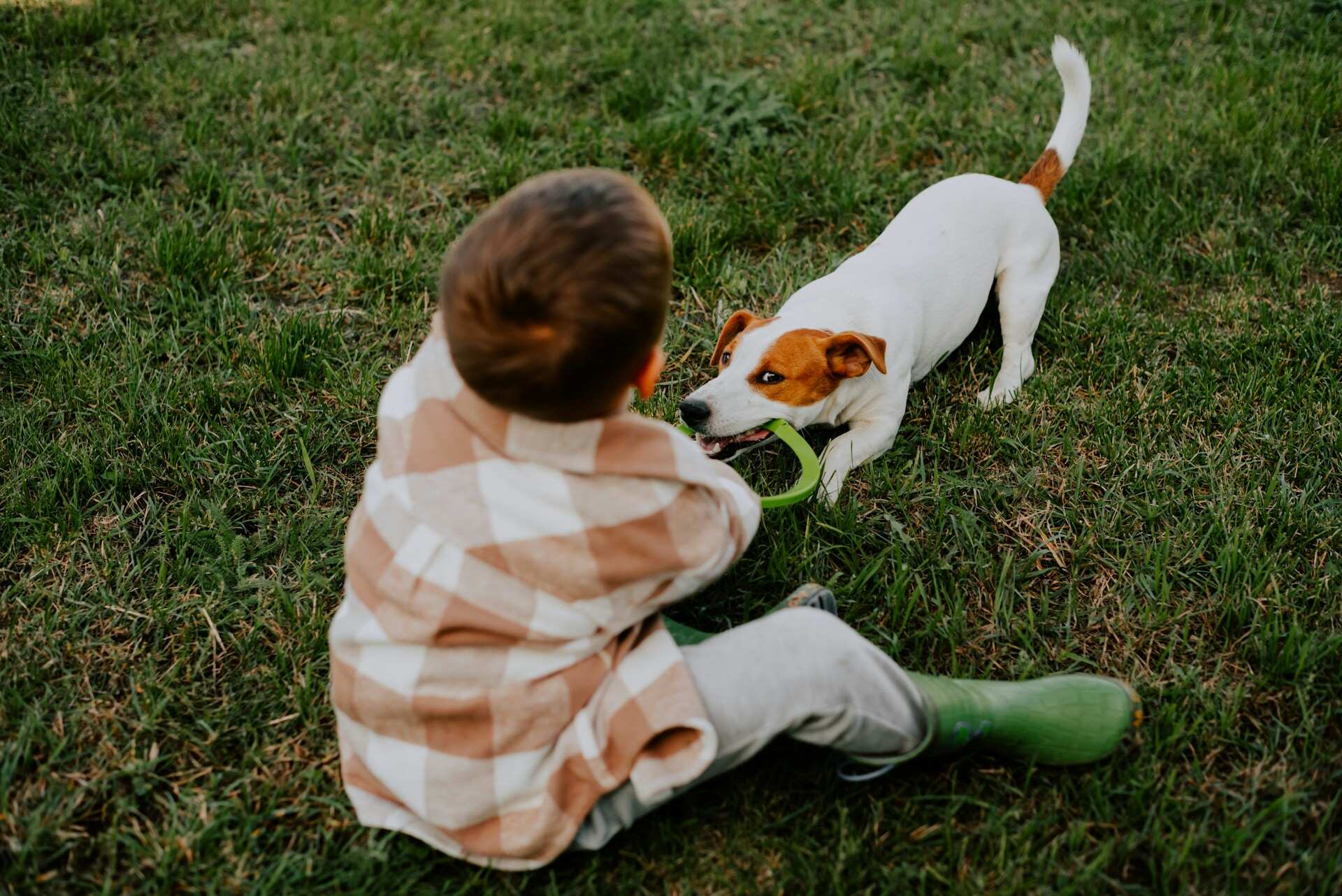
Read more:
The perks of an everyday exercise routine – for your dog & you
A regular exercise routine doesn’t just keep your dog occupied. Rather, here’s what you might see once you start making everday walks and playtime a part of your routine.
A drop in destructive behaviors
Puppies are just bundles of energy, aren’t they? Sadly, this energy might turn up in some destructive ways. (Aka, pairs of chewed slippers, a mess indoors, or constant barking or whining.)
You might also experience these behaviors with untrained adult dogs – or if you’ve just adopted one.
Some puppies (and older dogs) might also be prone to separation anxiety, which might turn up as peeing inappropriately around the house – or even escaping home. (Maybe to find you!)
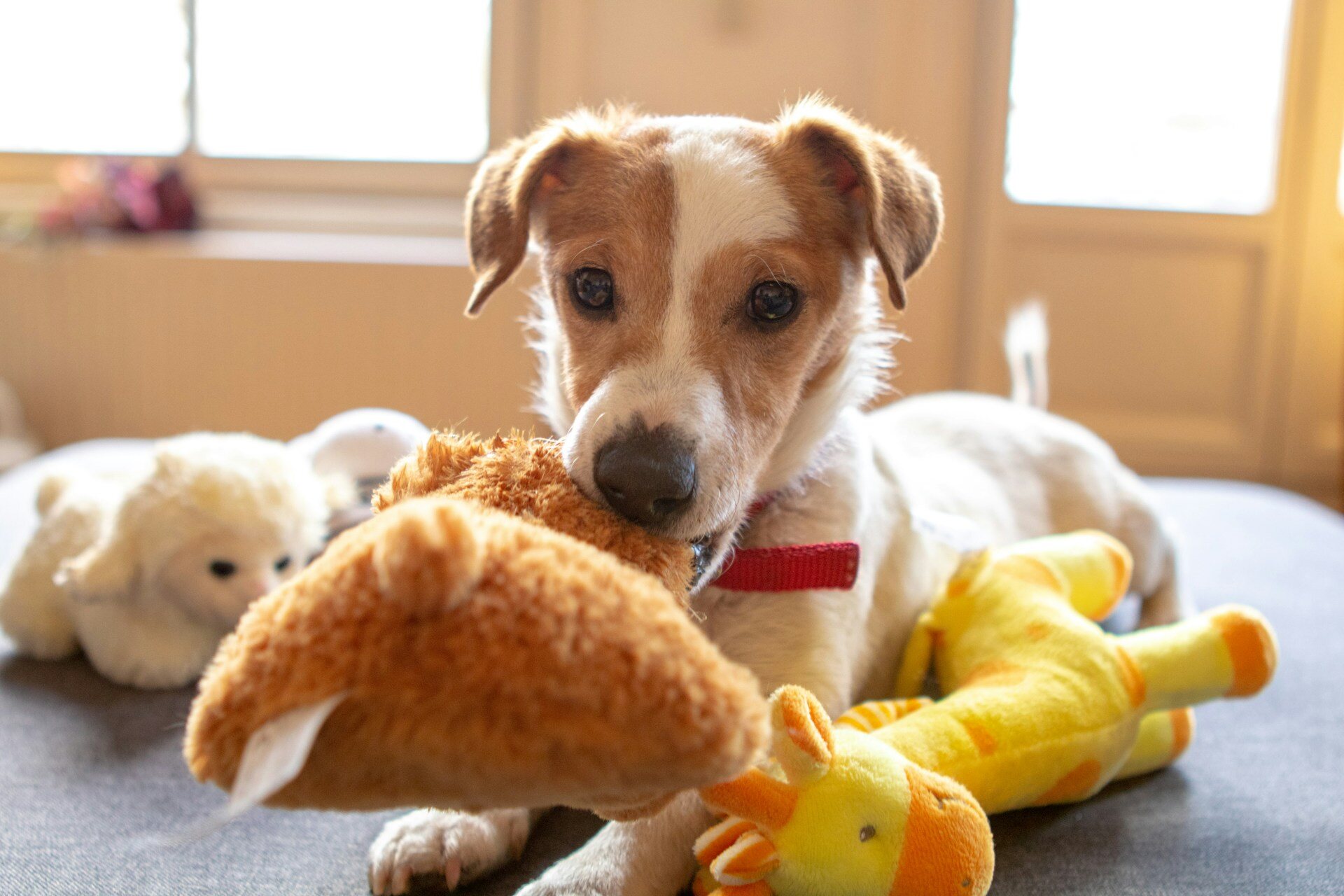
But with regular exercise, you can:
- Help your dog better focus their energy into a productive, healthy activity
- Spend some quality time with you (increasing their trust you’ll return to them)
- Tire them out enough to prevent any further mischief
An improvement in your dog’s overall health
Let’s admit it: a chonky dog can be kinda cute. But over time, the extra weight isn’t great for their overall health.
If your dog is overweight or seems to be slowing down as a result of aging, a gentle exercise routine can help get them back on track to become their healthiest self.
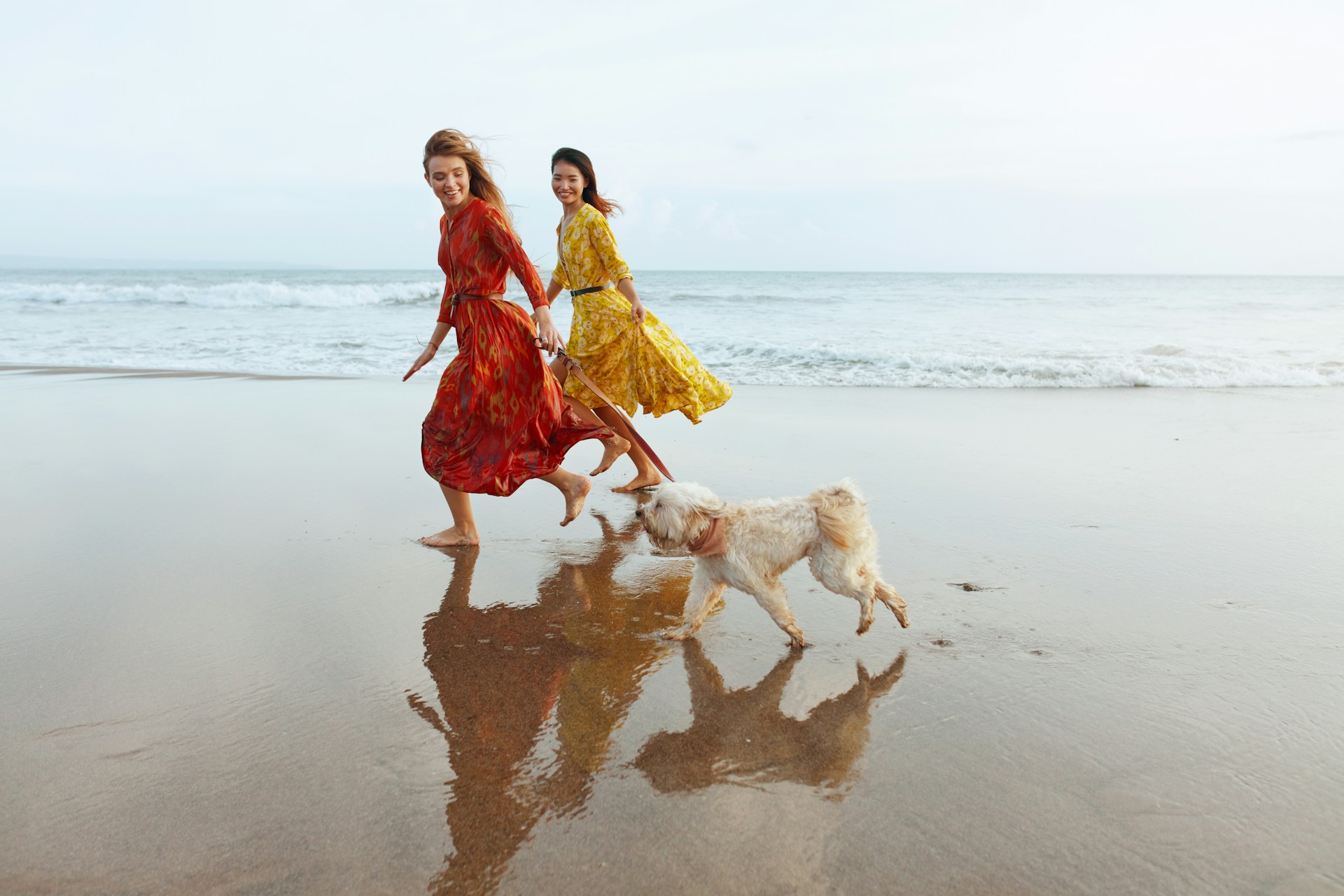
Besides, it can also mean that your dog:
- Sleeps better
- Gets along better with other pets and people (from the socializing on walks or at the puppy park)
- Stays mentally active, which can help prevent aging-related diseases like cognitive dysfunction syndrome
- Gets to spend more time with you, their favorite human!
Your dog is not able to take themselves for a walk or throw their own ball to fetch – so it’s up to you to make it happen. They’ll reward you with better behavior, sleep, and lots of doggy affection.
Figuring out your dog’s exercise needs
Ever find yourself at the gym on Jan 1st – and taking a year-long break from Jan 2nd onward?
Well, it’s similar for your dog. Getting started with an exercise routine might be easy when you’re still fresh and motivated. But sticking to it? Not so much.
That’s why tracking your dog’s everyday activity can be a massive motivation boost. (Kind of like a Duolingo streak for your dog’s exercise routine.)
Plus, with Tractive’s fun Activity Tracking features, you’ll know exactly how much exercise your dog needs everyday – based on their personal characteristics, like their age and general activity.

Once you’ve set up Activity Tracking, your Tractive device’s built-in motion detector picks up your dog’s activity throughout the day.
Now you can better understand just how active your dog tends to be – and whether they need a bit more exercise.
And even better, you can more quickly and easily spot a drop in your dog’s activity – and catch on a health issue early.
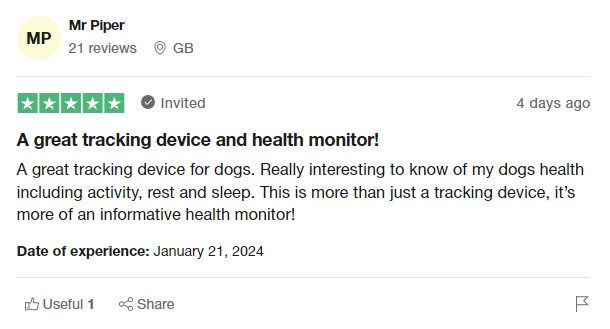
So now that you know how much exercise your dog might need based on their everyday activity – here are a couple of other factors to keep in mind, like your dog’s age, breed, and overall health and fitness.
How much exercise does a dog need every day – based on age?
A dog’s daily exercise routine can depend on their age and how their energy tends to be around these time periods.
- Some adult dogs can hike for hours
- Puppies might do better with several short play sessions each day.
- Senior dogs require a more relaxed pace.
Read more: How To Convert Dog Years To Human Years To Find Your Dog’s Real Age
How much daily exercise is enough for a puppy?
Puppies are little balls of energy, dashing through the house – and then falling asleep as quickly! Because they’re still growing, puppies need short, frequent walks or play sessions with rest periods in between. (So a long walk around the neighborhood may be too much for them.)
💡A rule of thumb for your puppy is five minutes of exercise, twice a day, for each month of age. So a three-month-old puppy will need about 15 minutes of exercise, twice a day.
Puppies become adults around six to 18 months of age, depending on the breed. Large dog breeds take longer to mature.
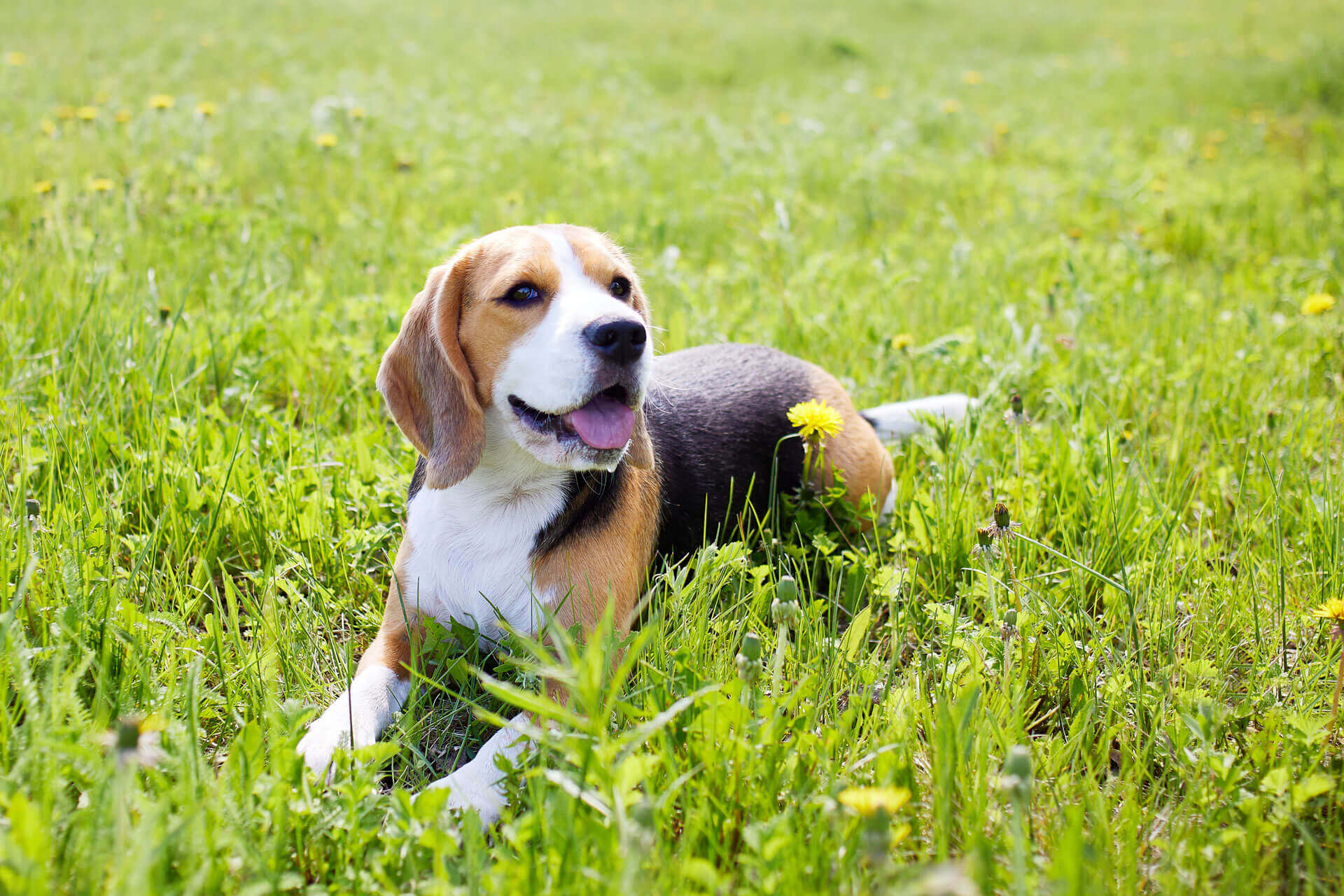
How much daily exercise is enough for an adult dog?
💡 Experts say that 30 minutes to two hours of daily exercise is right for most adult dogs.
Which might look like a 20-minute walk with your pup each morning and evening – and a vigorous play session after lunch. Monitor your pup and you’ll be able to find the right amount of daily exercise to keep them safe and healthy.

And a great way to stay motivated to your daily routine? Compare your dog’s activity to others just like them! It’s where your Tractive device’s Activity Benchmarking and leaderboard comes in handy.
With it, you now have a general idea of how much exercise dogs – just like yours – should be getting per day. Plus, there’s nothing like a sense of healthy competition with other dogs and dog parents – just like you – to stay motivated.
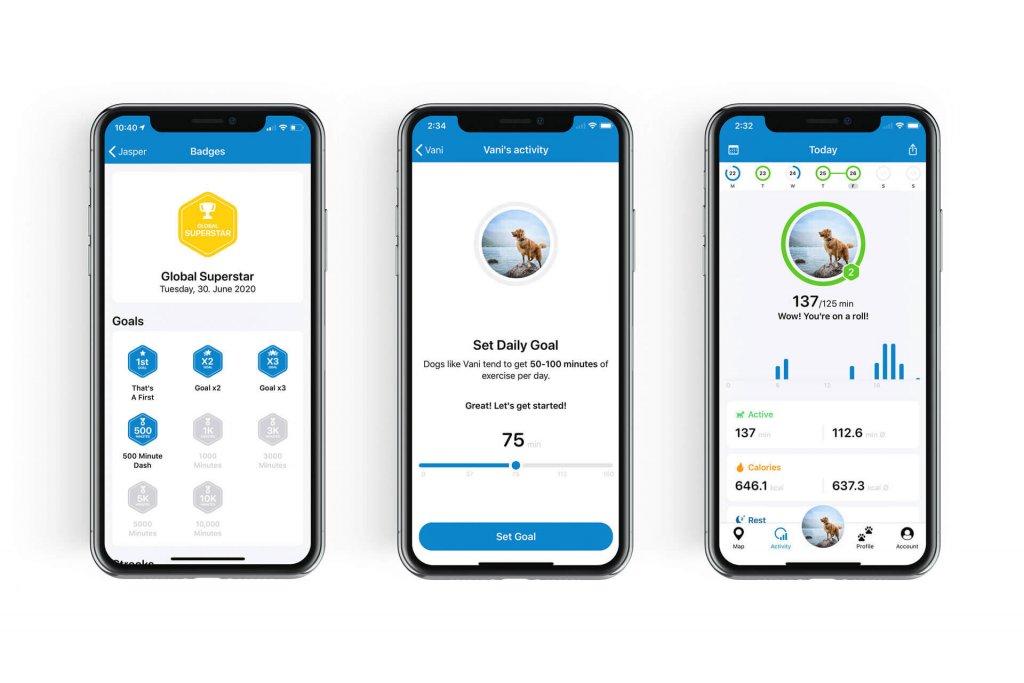

How much daily exercise is enough for a senior dog?
Senior dogs may have slowed down, but they still need daily exercise to maintain their health – at least 30 minutes a day. If you have a senior dog with painful arthritis:
- Make walks more comfortable by choosing smooth, flat surfaces like sidewalks or paved trails.
- Avoid steep slopes, which can stress their joints.
- Consider low impact exercise options like swimming. It works great for dogs with mobility-affecting conditions like hip dysplasia or orthopedic issues, because it is joint-friendly and improves cardiovascular health.
Read more:
- Can My Dog Swim? A Guide To Safe And Fun Swimming With Dogs!
- Arthritis In Dogs: How To Deal With Hip And Joint Problems In Dogs
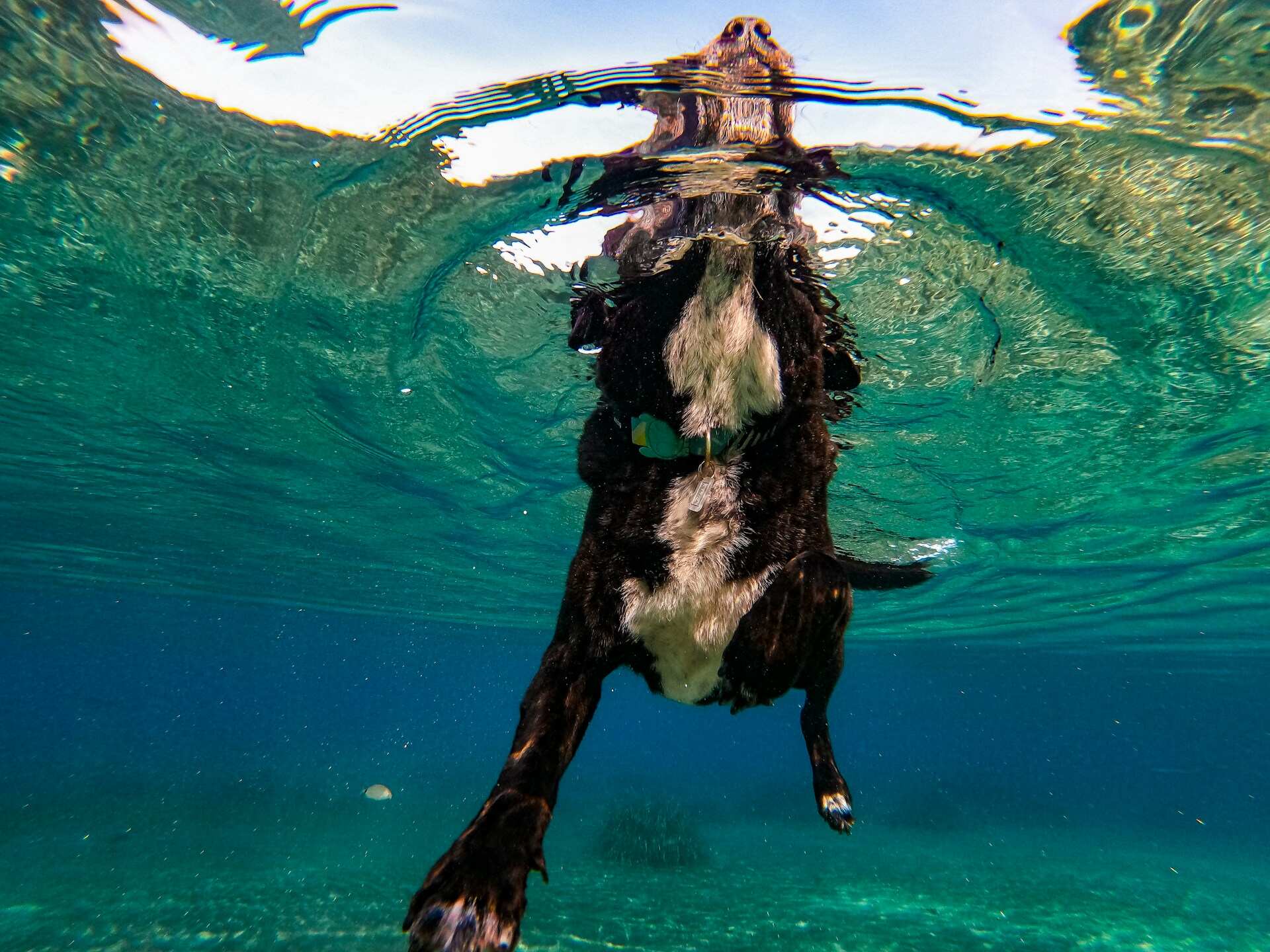
As with any pet exercise program, start by observing your dog carefully to figure out how much exercise they can handle. If you have a senior dog with health issues, it may be wise to talk to your veterinarian before starting a new exercise routine.
How to tell if your dog’s gotten enough exercise
With all this said – every dog is different. Some might leap at the first opportunity for a walk or run outdoors, while others might be (a lot) more reluctant.
So start slow and experiment with what your dog responds best to. Ideally, they should be happily tired at the end of the day.
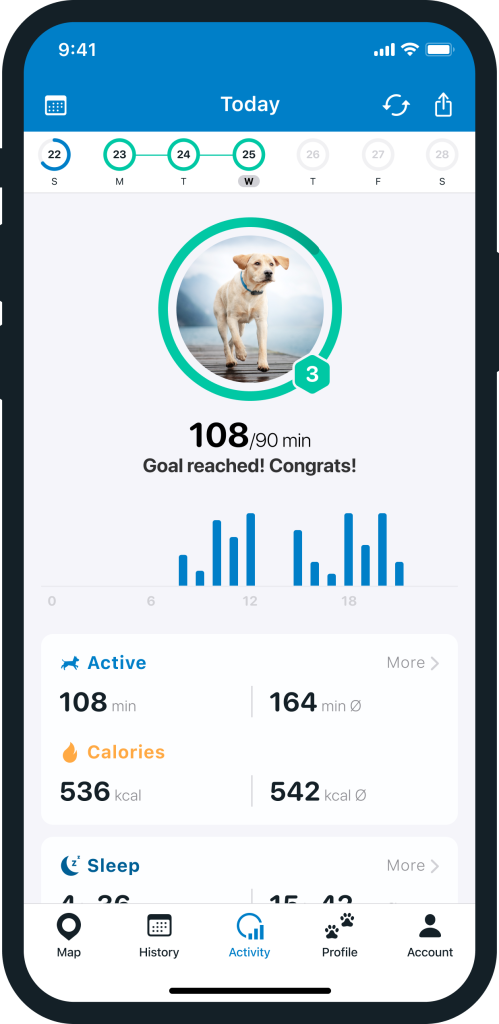
- If your dog still has lots of extra energy in the evening, add more exercise to the schedule.
- If they’re exhausted by days’ end, cut back by shortening your walks or play sessions.
💡Setting yourself a daily goal or target for active minutes can also help you stay motivated.
With it, you now have an idea of just how much exercise your dog needs to stay healthy – keeping their individual needs in mind.
As always, however, make sure to get the green light from your vet if you’re wondering whether your dog can participate in certain activities. Then, take a call based on what works best with your lifestyle.
By finding an exercise routine that you both enjoy, you and your buddy will build a bond that lasts a lifetime – and get to stay together that much longer.
How much exercise does a dog need every day – based on breed?
All dog breeds were developed for specific roles – whether that’s being a working dog, hunting dog, or even companion dogs. Some breeds were developed for an active lifestyle – while others do just fine with less exercise.
Which is why it’s so important to pick a dog whose daily exercise needs match your lifestyle.
- If you live in a tiny apartment, a high-energy dog breed may not get enough healthy exercise in your household. You might be better off with a more chill, low maintenance dog breed instead.
- But if you are an avid runner or have a large working property, a high-energy dog may be a perfect fit.
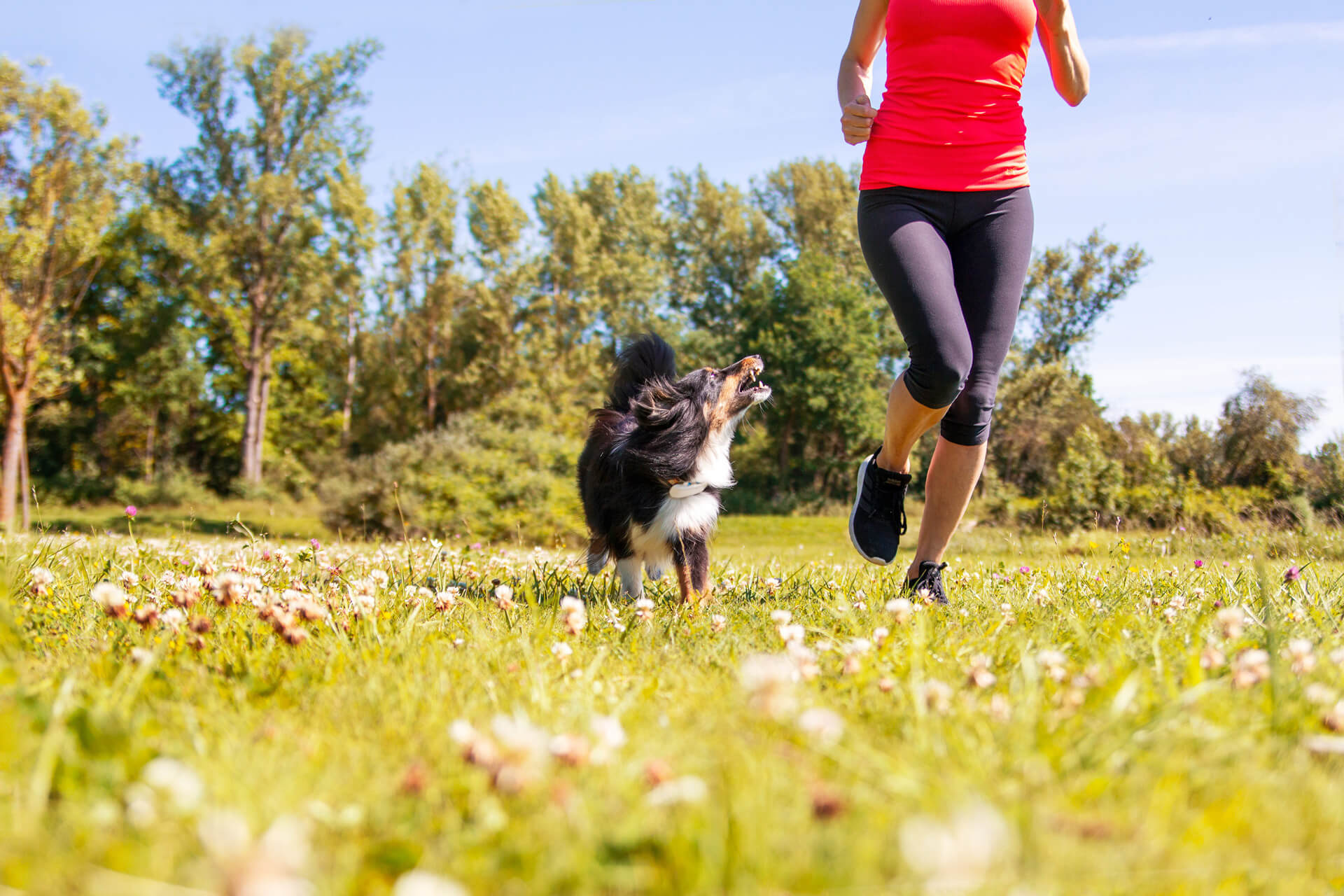
Read more:
High-energy dog breeds
…include Border Collies, the Shepherd, Pointer, Setter, and Labrador families – and most working dog breeds. If they don’t get their daily exercise, they may get bored, anxious, or frustrated easily – and more difficult to maintain.
⚠️ Boredom is also one of the key reasons why dogs run away from home. And when it comes to an active dog breed, they might even run off to burn some of that extra energy!
Most of these dog breeds can handle frequent runs, long hikes, and lively play sessions. Because of this, be prepared to stay on your toes and keep them active on a daily basis.
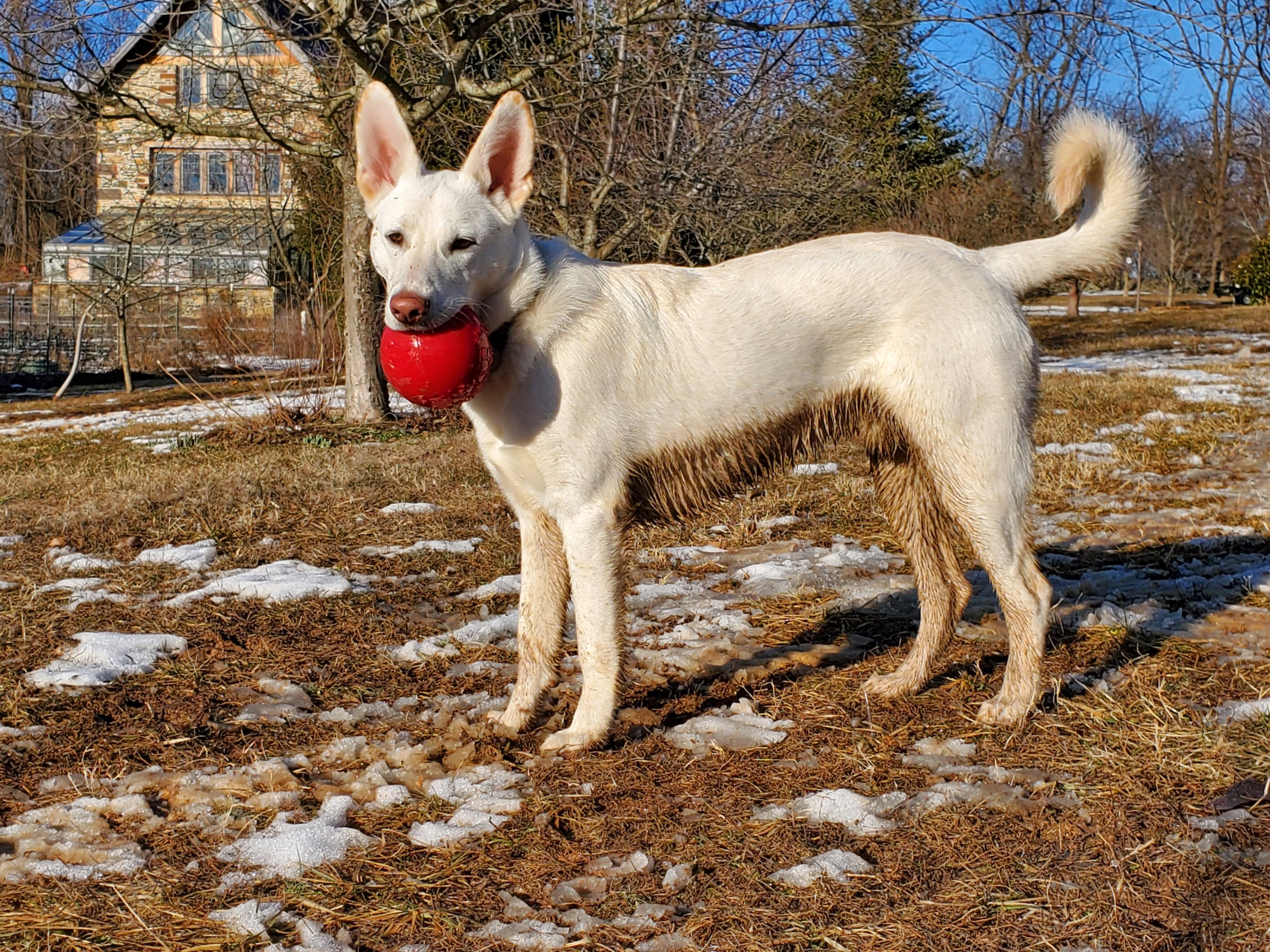
💡Meet Opie, a high-energy Shepherd mix who clocks in a regular 300-500 active minutes on his Tractive device per day!
“We thought we were crazy for a while,” says his mom, Autumn. “Then, we discovered Tractive and were relieved to find out we weren’t crazy – Opie really was the most active dog around.”
Read more: Active Dogs: 10 High-Energy Dog Breeds For Outdoorsy Folks
Low-energy dog breeds
Bassett hounds, Pekingese, Yorkshire terriers, and chihuahuas are examples of typically low-energy dog breeds. They may enjoy walks around the neighborhood but probably can’t handle an all-day hiking trip.
Giant dog breeds such as Great Danes and Newfoundlands are somewhat deceiving. Despite their large size, these giant dogs are often less energetic and have lower activity needs.
Some brachycephalic dog breeds such as Bulldogs, Pugs, Boston terriers, and Boxers have flat faces and short airways that affect their breathing, so vigorous exercise may be too taxing for them.
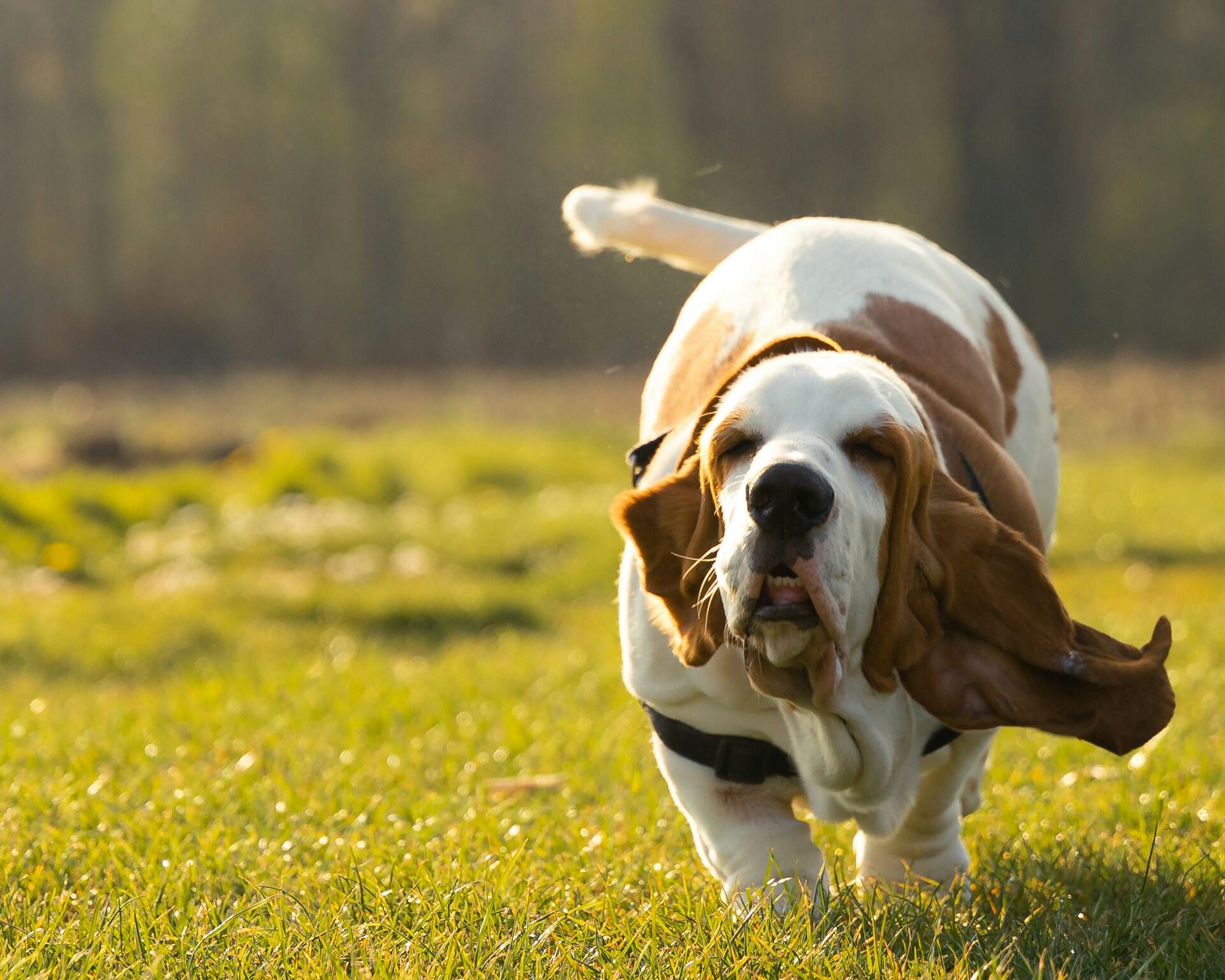
💡 Short on time? You can still give your dog the exercise they need by hiring a dog walker or sending your pup to doggie day care. These professionals will help your dog remain healthy and active with daily exercise.
Now with all that said: your dog still has their own habits and unique personality. So it’s entirely possible you might have a Basset Hound that can’t stop sniffing around and exploring outdoors – or a Labrador that doesn’t venture past your backyard.
So besides age and breed, make sure to also consider your dog’s preferences and temperament. This can help you better understand the type and amount of daily exercise they need to stay healthy.
What are the best ways to exercise your dog?
Whether you live in the city, suburbs, or in a rural area, you’ve got a whole bunch of options to create a healthy exercise routine for your pup.
Outdoor activities
The great outdoors provides endless opportunities for a healthy and safe exercise routine. Consider warming up with a walk around the block before engaging in rigorous play.
Hiking & Camping
Walking on trails can be physically demanding, plus trails are a scented paradise for your pup’s nose. Just make sure to go well-prepared – with plenty of healthy snacks, a first aid kit, and some prep to ensure you’ve picked a dog-friendly route.
Read more:
- Hiking With Dogs: Tips For A Stress-Free Adventure
- Camping with your dog: Best tips for a fun camping experience
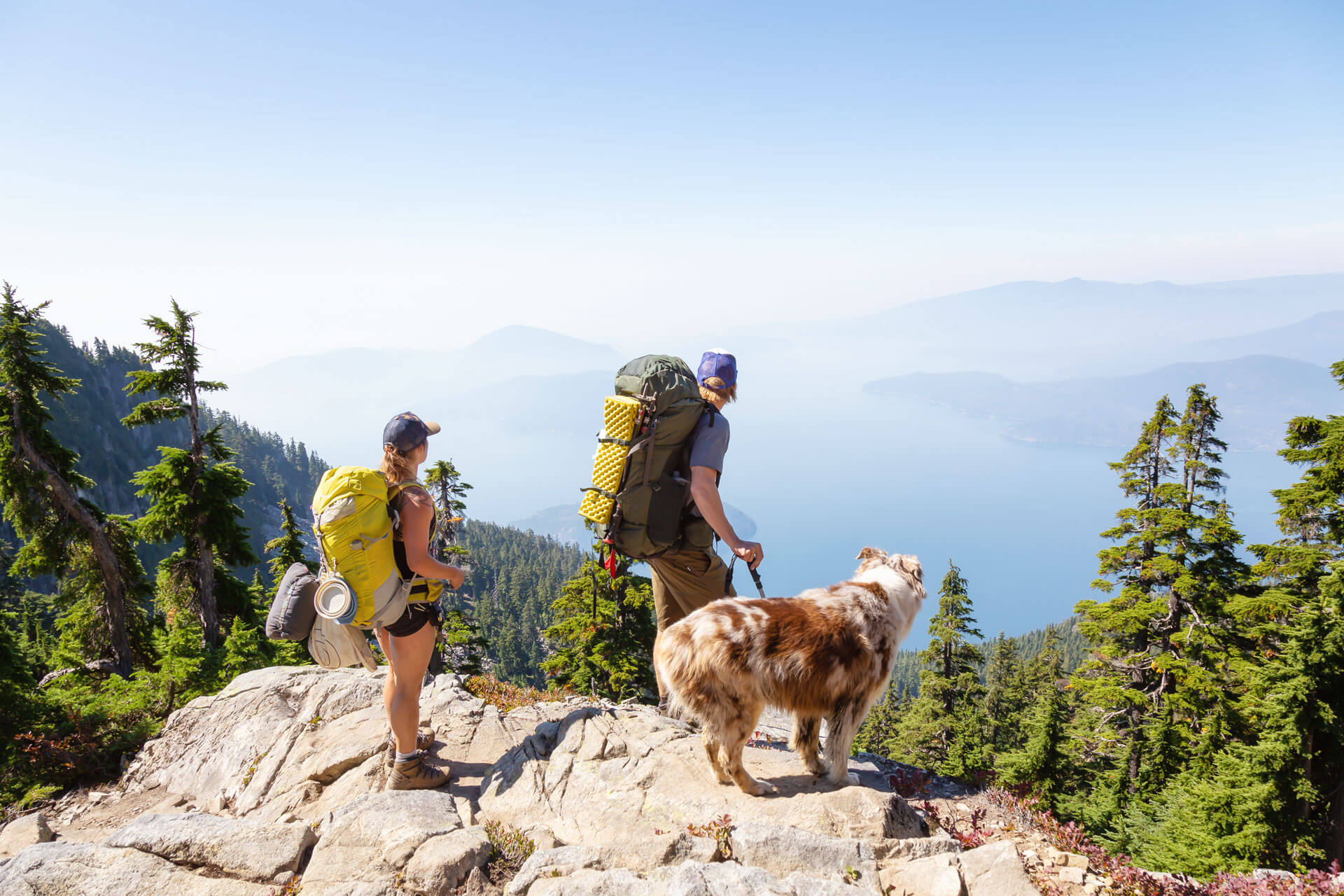
Swimming
Water play is a fun way to cool off on a hot day, and the joint-friendly environment is a bonus for senior dogs. A dog life jacket helps your pooch feel safe and confident in deep water.
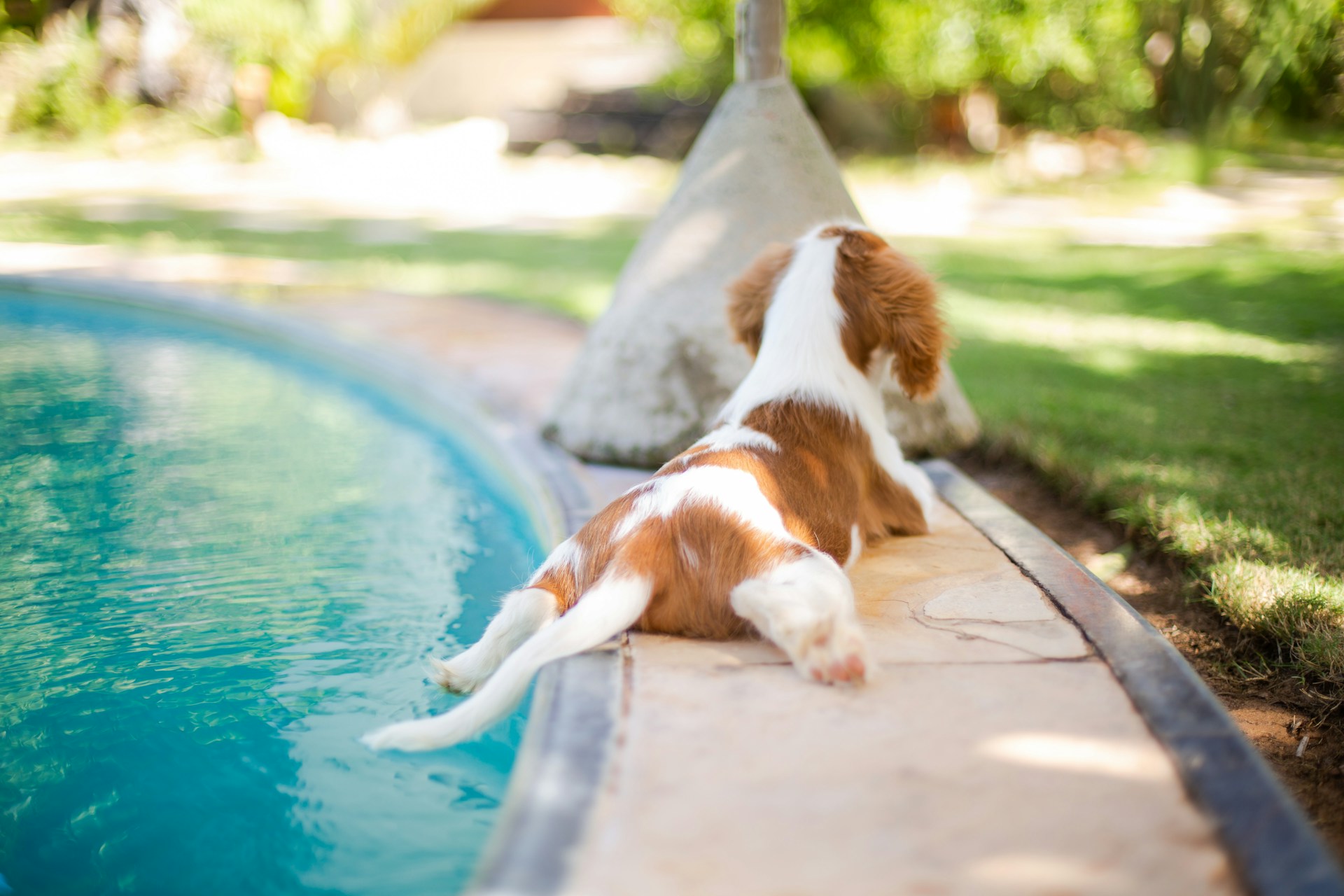
Read more: Dogs And Heat: How To Keep Dogs Cool In Summer
Fetching
Running at full speed to retrieve a toy will get your dog’s heart pumping. Just make sure to use pet-safe toys rather than sticks, which can splinter in your dog’s mouth.
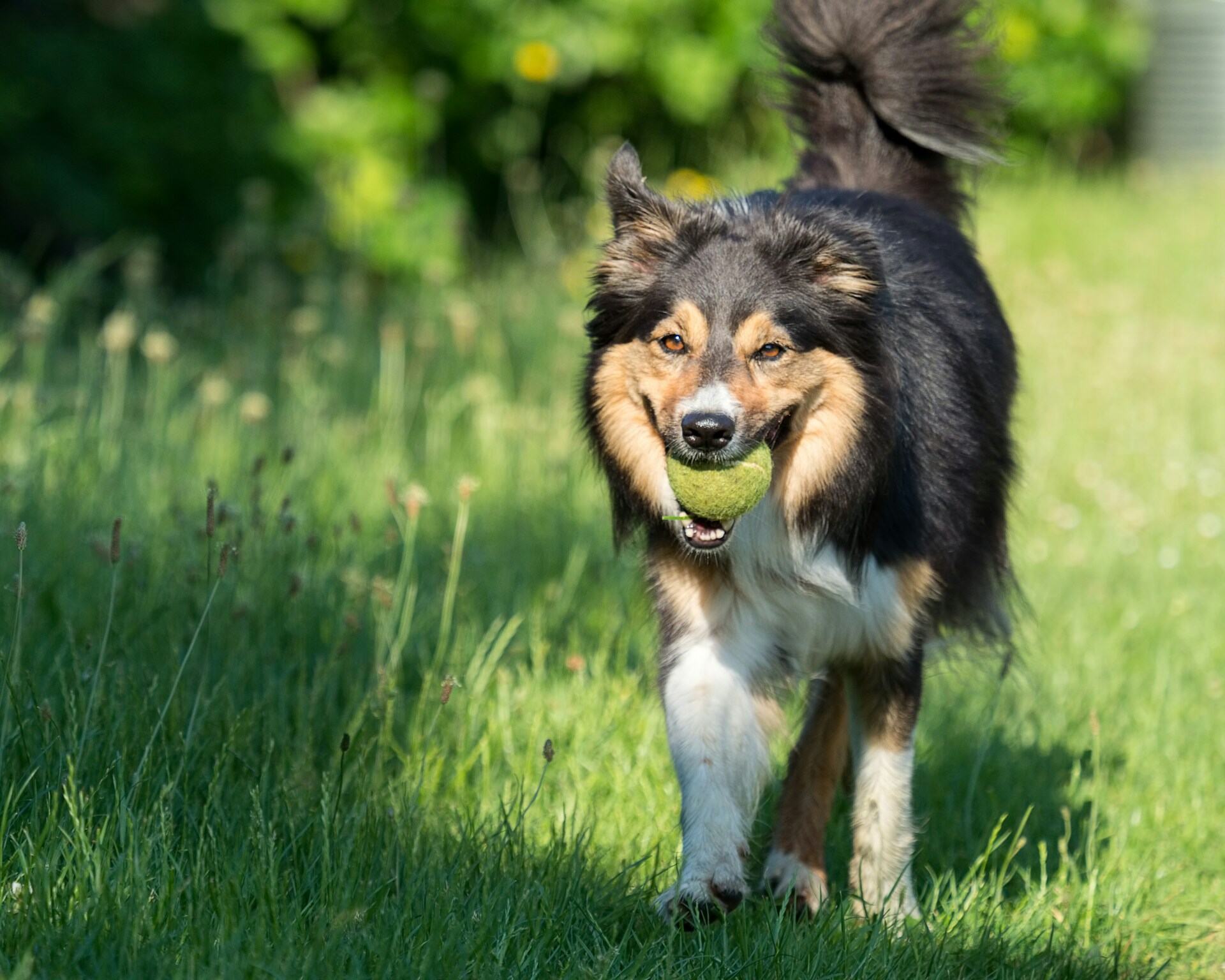
Obedience & agility training
These activities provide mental as well as physical stimulation. Retrieving, weaving, climbing, jumping, and following commands require your dog to focus.
Read more: What is Dog Agility Training?
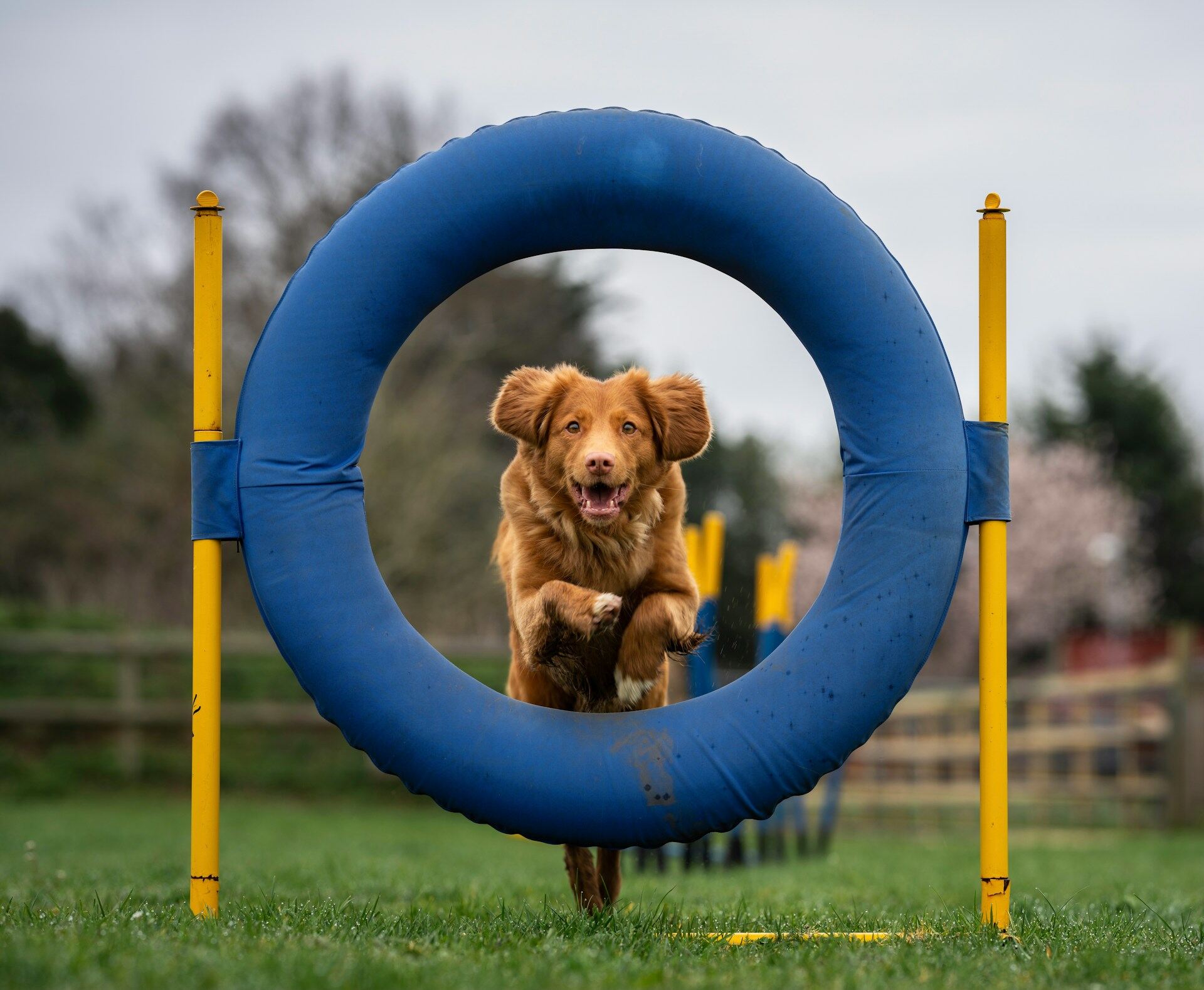
Dog parks & play dates
Your local dog park is an inexpensive way to give your dog access to a large play space and socialize with other dogs.
In fact, it’s a great place for dog play dates! Meet up with other pet parents at a local park for a walk or play session. Another option is a dog daycare with group play, which can also help your dog spend time with other dogs and learn to get along with them.
(Just make sure your dog is comfortable socializing with other pups before joining up.)

Read more: Dog Park Etiquette: How To Follow Dog Park Rules And Make Your Visit Enjoyable
Dog Sports
Scent work, flyball, herding, and conformation are just a few of the opportunities available for dog sports. You and your pup can participate in organized competitions and clubs, or you can create your own at-home version.
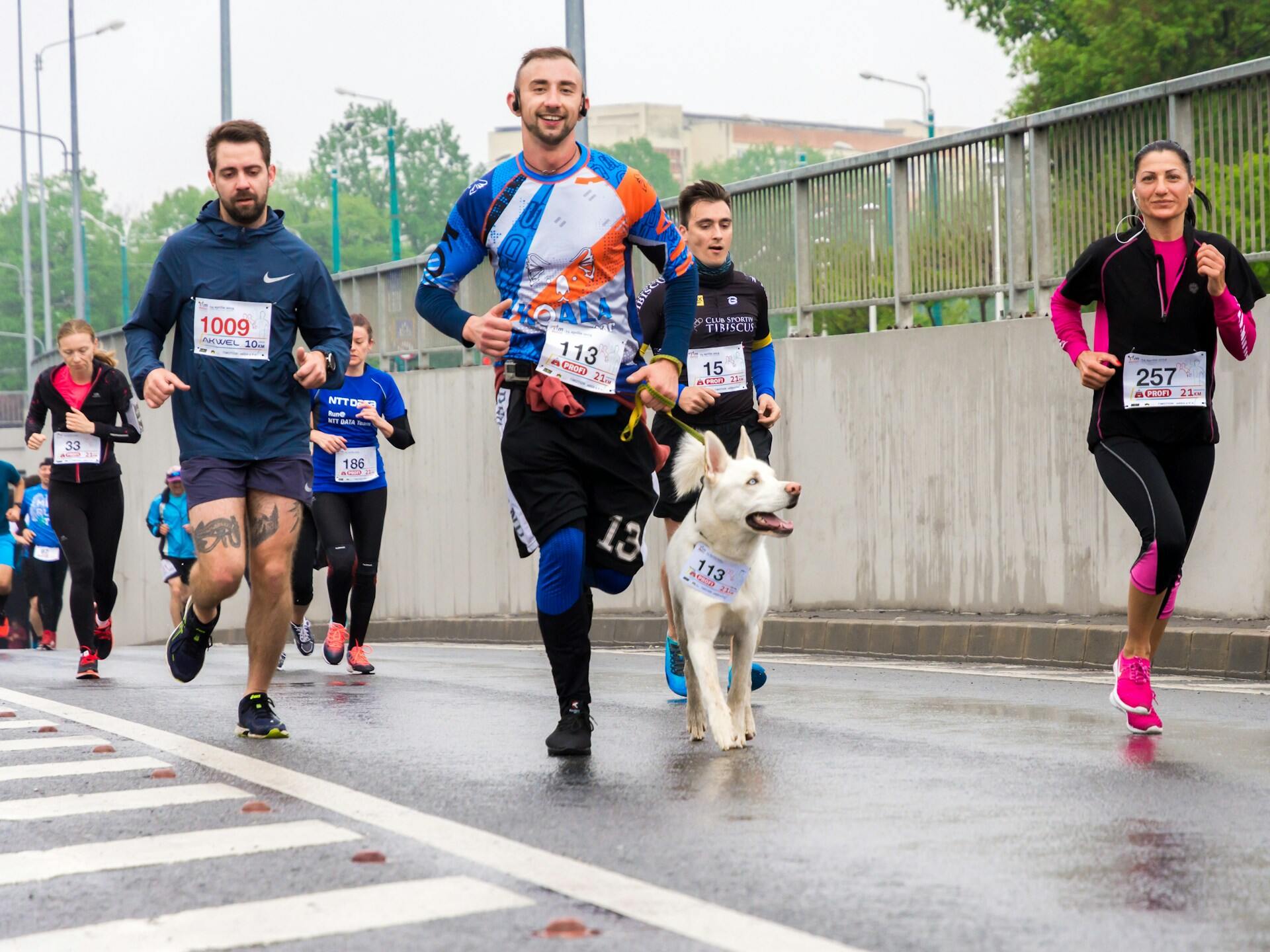
Read more:
Indoor activities
Your options for indoor dog exercise are limited only by your imagination. The play space may be smaller, but it’s still possible to enjoy some healthy activity with your pup indoors.
Stairs
Run up and down the stairs with your pup a few times, or toss a ball to the bottom step and ask your dog to retrieve it.
⚠️ Just watch out: stairs are more challenging for dogs with short legs like Dachshunds, Corgis, Bassett hounds, or brachycephalic dog breeds. (As well as puppies of all breeds.)
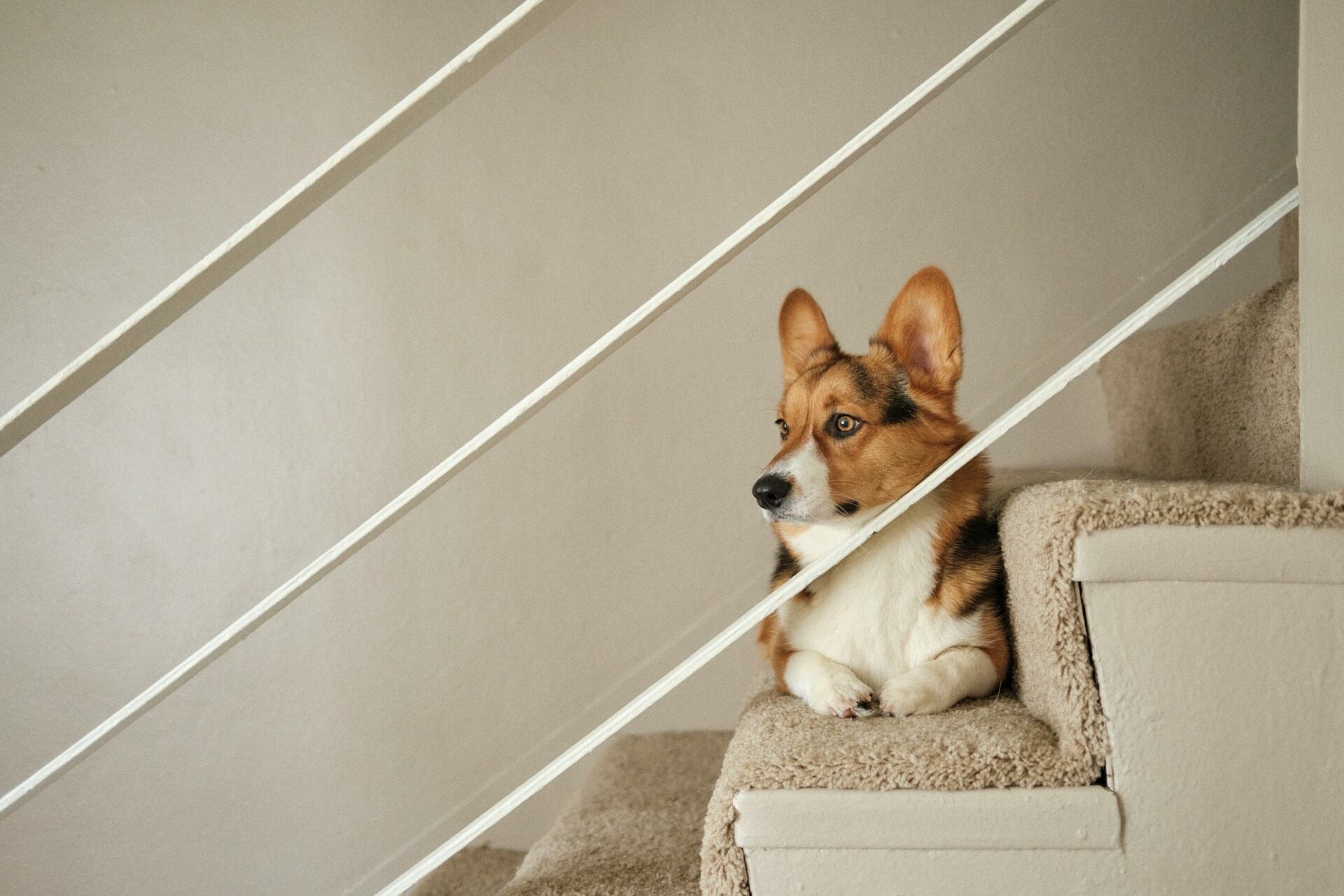
Hide and seek
This simple game provides physical as well as mental stimulation. This activity works best if your dog is skilled at basic commands like Come and Stay.
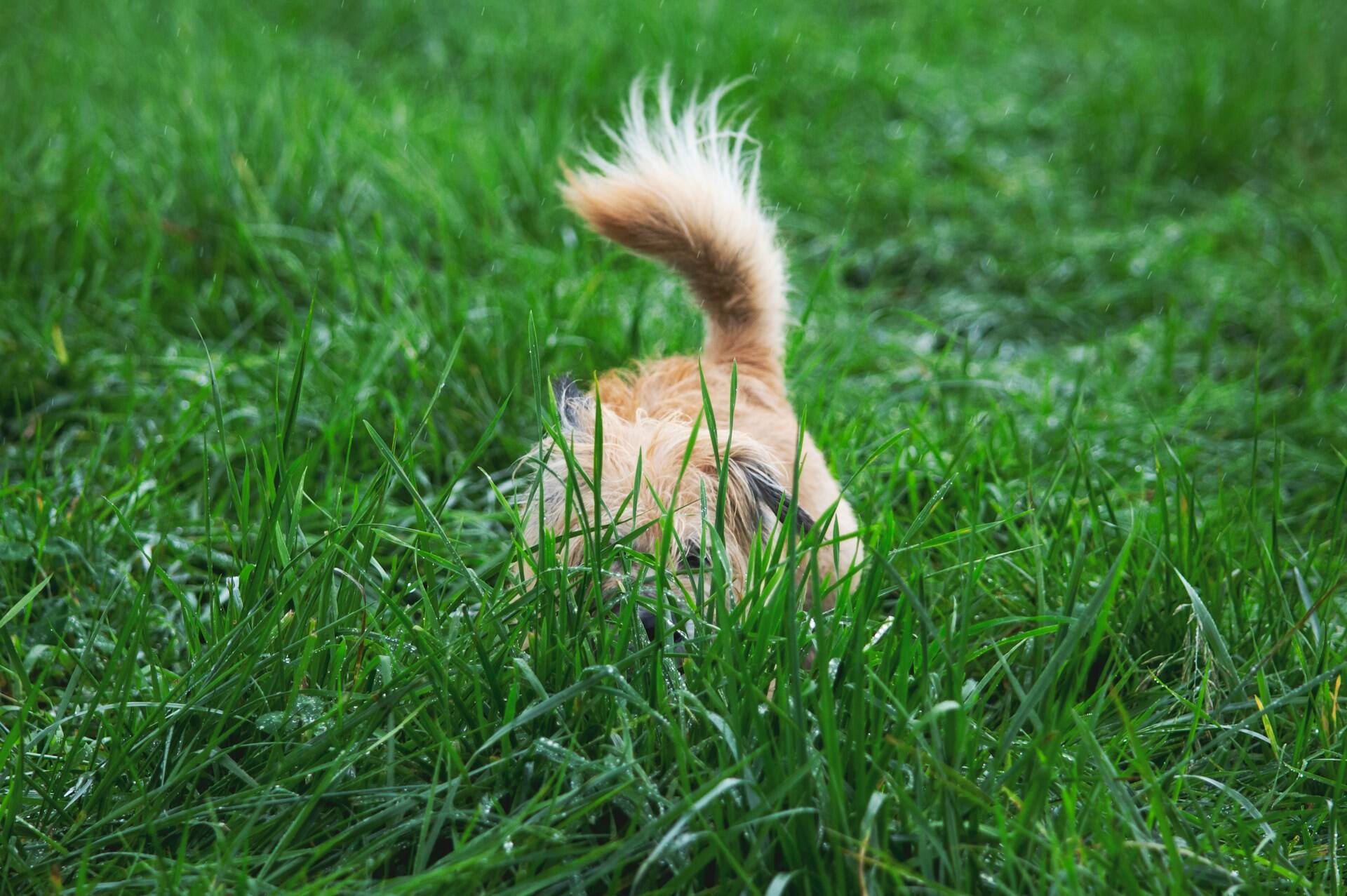
Read more: Dog Recall: How To Teach Your Dog To Come When Called
Obedience training
A few minutes per day of reviewing basic commands like Come, Sit, and Stay require your dog to focus and control their impulses, which is hard work! A well-trained dog is going to be better behaved when you take them outdoors to exercise.

⚠️ Teaching your dog to come when called is one of the most important commands when it comes to keeping them safe. (Especially if they’ve run off to burn some extra energy.)
DIY indoor agility course
Use broom handles, boxes, pillows, and hula hoops to create an agility course to fit your indoor space or even your backyard. Else, you could look for a local club that meets indoors.
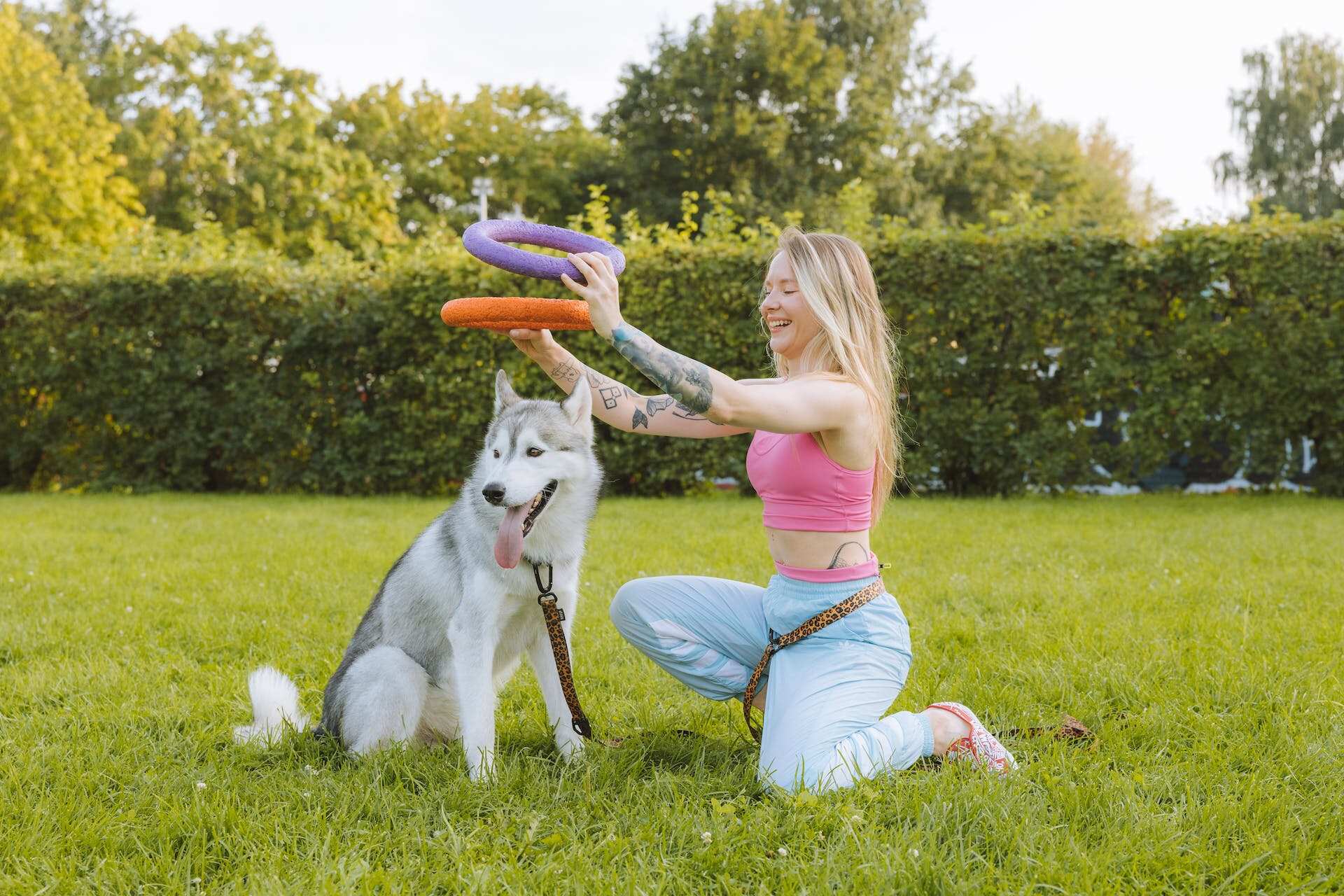
Mind the weather outdoors
The weather is a huge factor in determining how to meet your dog’s daily exercise needs.
During the warmer months, make sure to:
- Stay well-hydrated and bring along plenty of water for you and your dog.
- Avoid walking or playing outdoors when the sun is directly overhead.
- Do your best to avoid asphalt surfaces which might be too hot for your dog’s paws.

And in the colder months:
- Make sure not to stay outdoors for too long if it’s 45°F (7°C) or below.
- Protect your dog’s paws from ice and salt with booties, paw cream, and washing them thoroughly once you’re back home.
- Watch out for long walks outdoors. Snow can actually mess with your dog’s sense of smell – and make it difficult for them to sniff their way back home if they get lost.
Read more:
- How Often Should You Walk Your Dog?
- Heat Stroke In Dogs: Symptoms, Treatment & Prevention
- Dogs & Cold Weather: How Cold Is Too Cold For Dogs?
- 8 Best Tips On How To Protect Dog Paws In Snow
Other factors that affect how much exercise your dog needs
Besides their age and breed, factors like your dog’s health and general safety can affect the amount of exercise you get them. So make sure to:
Pay attention to your dog’s signals
Don’t pressure your dog into activities that are too strenuous. Senior dogs and puppies may need a little extra time to complete their walk around the block.
- Start slow if your dog is not used to being active, and build up gradually over several months.
- Always carry fresh water for your dog when you are engaging in vigorous activity.
- And importantly – remember that for most dogs, increased exercise should not require an increase in daily calories.
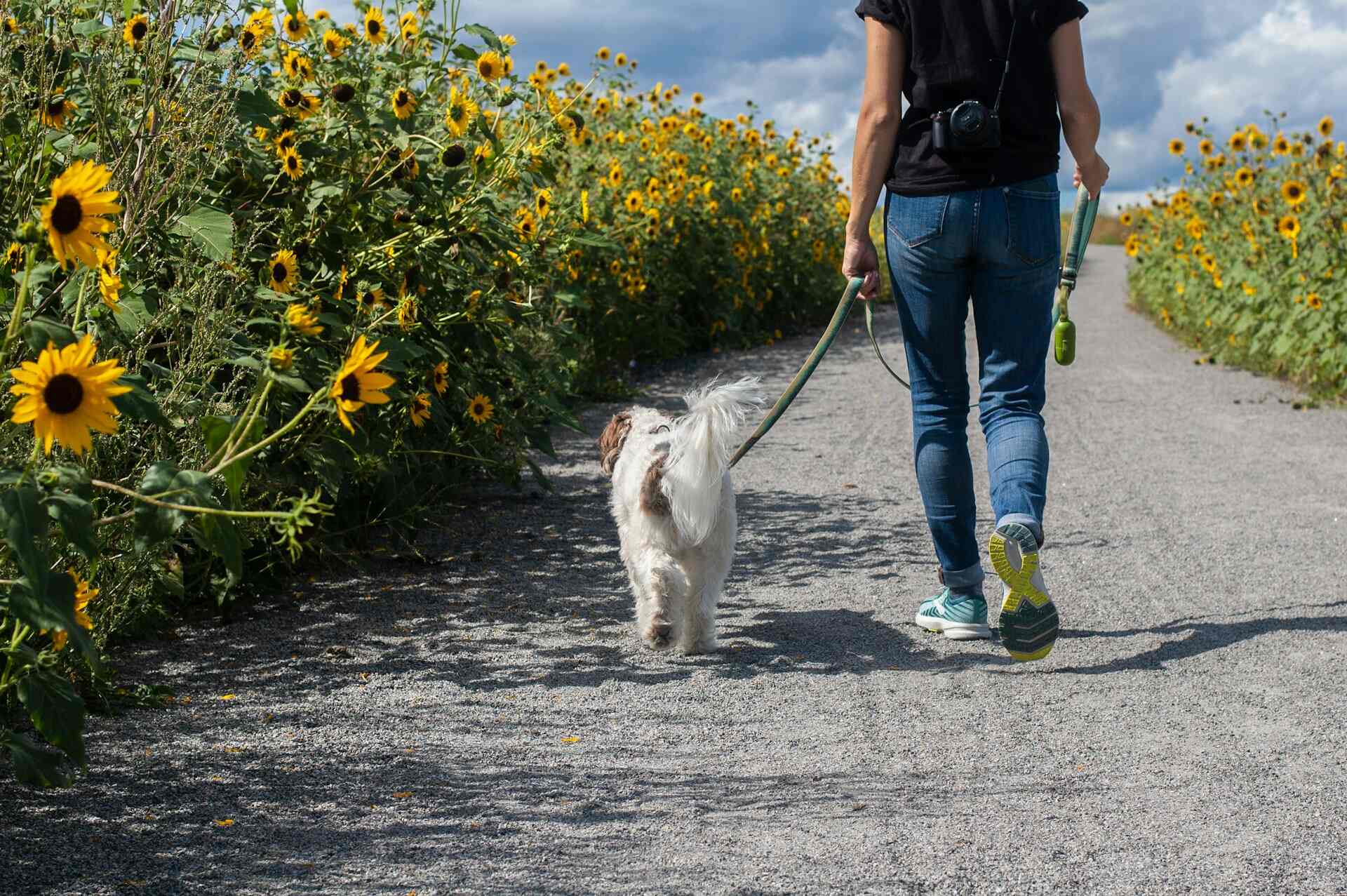
💡You can log your daily walks and adventures together with Tractive’s fun Walk feature! (Another great way to stay accountable to your buddy’s daily exercise routine.)
Keep your vet in the loop
Some pups have health conditions that can affect their ability to exercise. These include arthritis, hip dysplasia, heart conditions, and respiratory issues. Always consult your veterinarian for advice on the best way to introduce new activities to a dog with chronic health conditions.

Stay on top of safety when outdoors
Safety should be at the top of your list when exercising your dog. If you walk your dog after dark, outfit them with a high-visibility or reflective collar. This makes cars and pedestrians aware of your dog’s presence, and will help you locate them if they dash off.
Besides that, it’s also a great idea to get your dog microchipped. (If you haven’t already.) A microchip works like a permanent ID tag for your dog – and it’ll help a vet or local shelter identify you as the rightful owner in case your dog wanders off and gets lost.
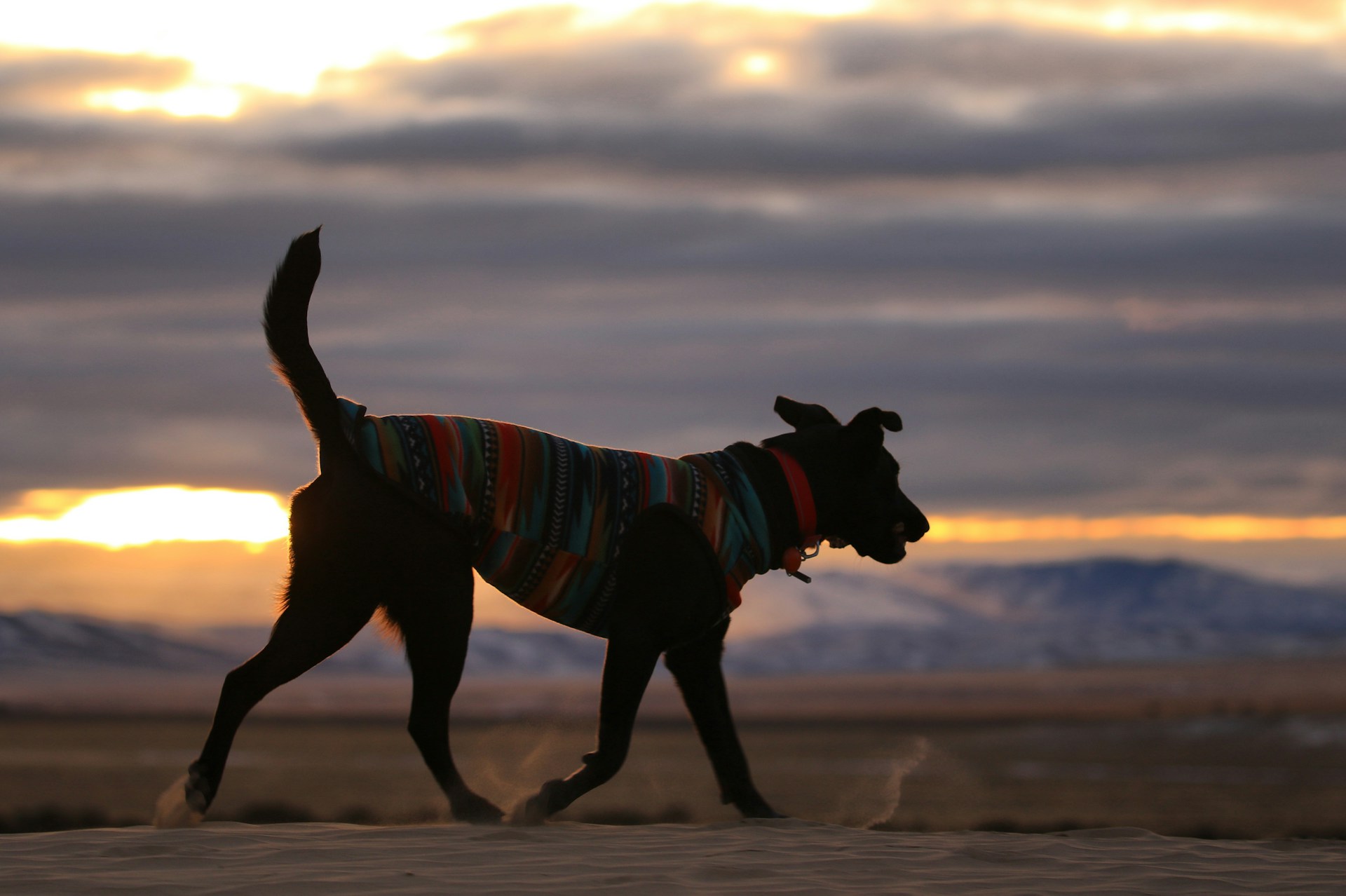
Read more:
💡Besides Activity Tracking, your trusty Tractive GPS also helps you track your runaway dog in real-time – over an unlimited range, and no matter where you are in the world.
So no matter if your dog runs off mid-hike or in the middle of an outdoor training session – you can follow their every step, with just a glance at your phone.
Keep track of your dog’s daily exercise
Besides keeping you motivated to stick to a routine, your Tractive device also helps you take a more active role in your dog’s health and wellbeing.
⚠️ Because one of the first signs your dog might be struggling with a sickness or infection? A drop in their activity. In fact, many serious health conditions – like parvovirus – begin with easy-to-miss symptoms like lethargy.
It’s why vets recommend keeping track of how much your dog can keep up with you when on the move. Because the minute you catch on to a drop in their activity, it might be a sign something’s wrong.
Which is where your Tractive device’s Health Alerts can be a lifesaver.
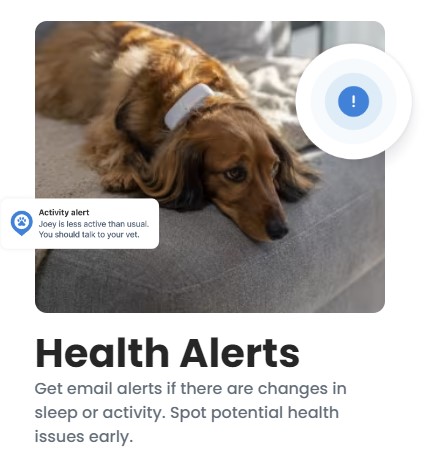

“It can be easy to miss out on changes in your dog’s or cat’s regular activity – or just if they’re on the move more or less than usual.
So we’ve set up Activity Degradation alerts for when your pet’s active minutes drop significantly.
They can help you intervene in a situation where your pet might be struggling with an infection or even just pain.”
– Sebastian Raab, Product Manager at Tractive & occasional pet-sitter

Wrapping up: how much exercise does a dog need?
An exercise routine isn’t just fundamental to your dog’s health – it’s a great way for you and your buddy to make some great memories together, while also staying active and healthy. So in general:
- Puppies need around 5 minutes of exercise twice per day – for each month of age.
- Adult dogs need anywhere between 30-120 minutes of exercise per day.
- Senior dogs need at least 30 minutes of exercise per day.
With a bit of patience and consistency, you and your dog can live a longer, happier, healthier life together, for many more years to come.
Just remember to:
- Consider your dog’s age. Puppies need shorter, more frequent play sessions per day. Adult dogs can manage regular walks. Senior dogs need a more relaxed pace.
- Factor in your dog’s breed. High-energy dog breeds might have higher exercise needs than low-energy dog breeds, giant dog breeds, or brachycephalic dog breeds.
- Use a mix of indoor and outdoor activities to keep your dog occupied and happy.
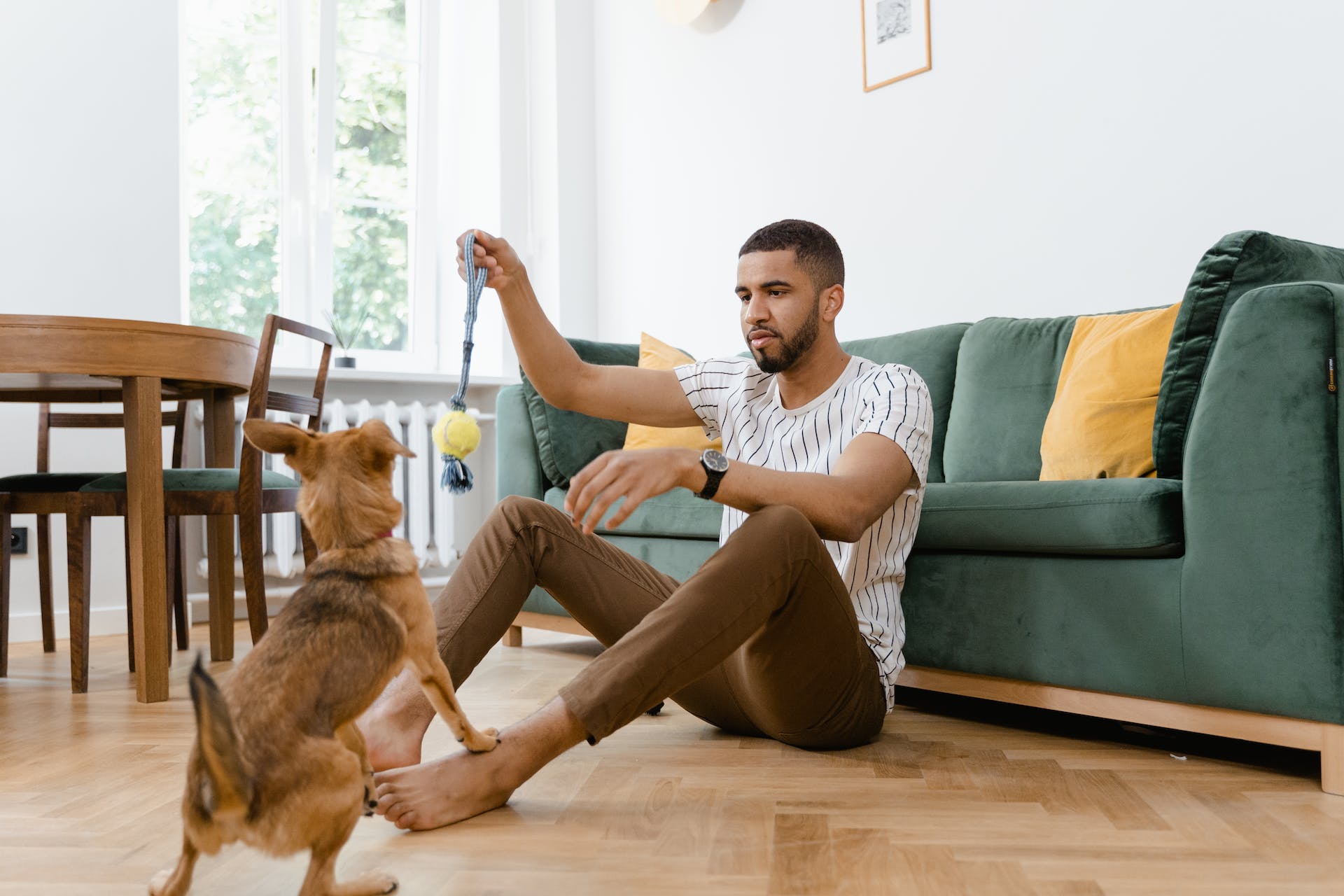
- Mind the weather outdoors. Avoid exercising outside if it’s too sunny overhead or too cold.
- Pay attention to your dog’s signals and adjust your pace accordingly.
- Loop in your vet and make sure to get the green light from them before getting started.
- Put safety first. Get your dog the right running gear and ideally a microchip to keep them safe outdoors.
And finally…
- Stay motivated to stick to your dog’s exercise routine for the long-term – with regular Activity Tracking.

Besides helping you understand how much exercise they’ve gotten, your dog’s Wellness profile also helps you figure out:
- What’s an ideal amount of exercise for dogs like yours.
- Whether your dog’s active minutes have spiked or dropped.
- If your dog might be sick or injured – because they’re less active than usual.
So take an active role in your dog’s health today – and live a longer, happier, healthier life together for the long run.
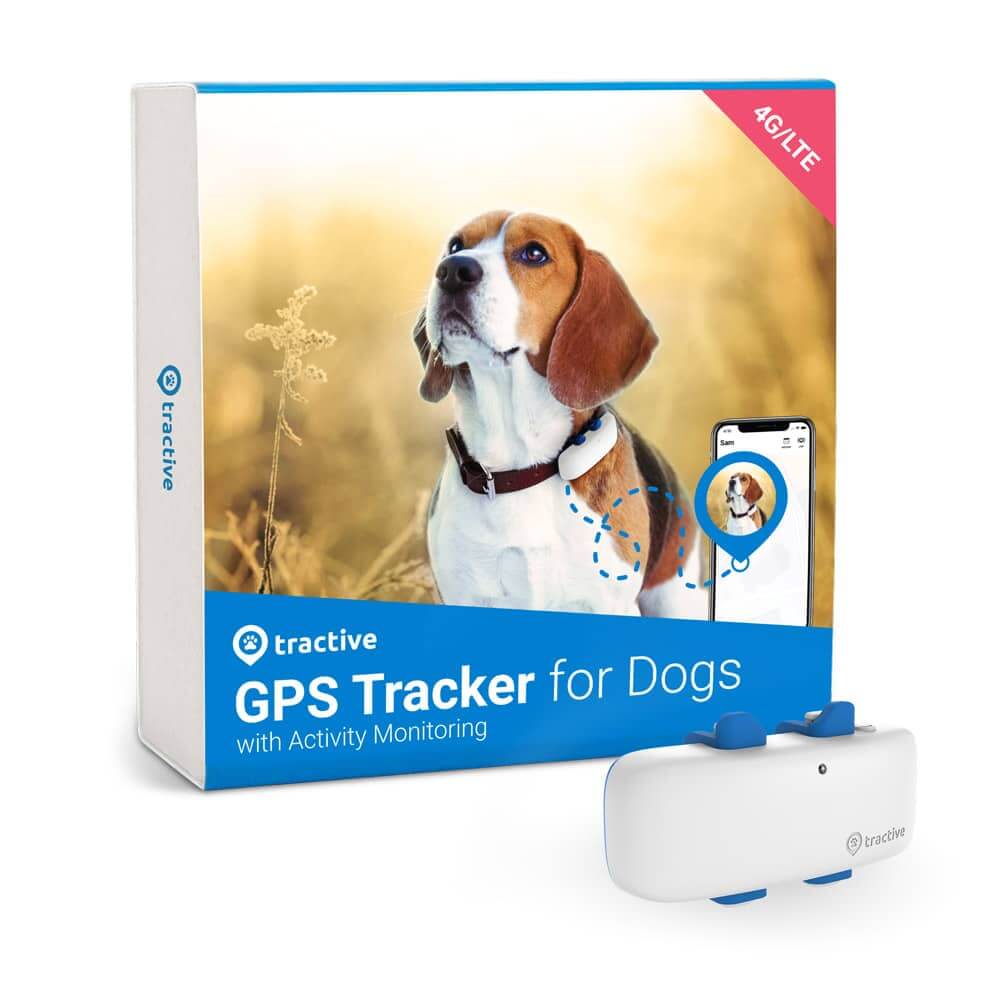
Keep in shape together
Set daily goals. See if your dog is getting enough active time and rest. Compare with similar breeds. Competitive? Challenge your friends, and rise in the global rankings.
For more tips, check out this video on how much exercise a dog might need on the regular:
And if you’ve liked this post, share it with a friend or a loved one – and let’s help build a safer, kinder world for our furry friends, together.
Your furry friend’s health and wellbeing means as much as to us as it does to you. So we’ve made it a priority to only share medically-relevant content on our blog.
This post was checked, double-checked, and medically verified by Georgia-based vet, Dr. Dwight Alleyne.
Dr. Dwight Alleyne, DVM
Dwight Alleyne was born and raised in Long Island, New York where his love of animals began. His career for animals began working for a well-known no-kill animal shelter on Long Island.

He worked his way up the career ladder working as a kennel technician, veterinary assistant, and then becoming a licensed veterinary technician at the shelter.
His passion for veterinary medicine led to him applying to and being accepted at Cornell University Veterinary where he graduated from in 2006. After completing a small animal rotating internship at Purdue University, he eventually made his way to Georgia where he has been practicing ever since.
Dr. Alleyne has practiced at several small animal clinics throughout Georgia. He has a keen interest in soft tissue surgery and has extensive experience in performing ultrasounds including echocardiograms.
When he is not practicing medicine, Dr. Alleyne enjoys writing and editing pet health articles and providing pet advice through telehealth.
Dr. Alleyne also has his own blog called “The Animal Doctor Blog.” Check it out on: www.anmldrblog.com.


